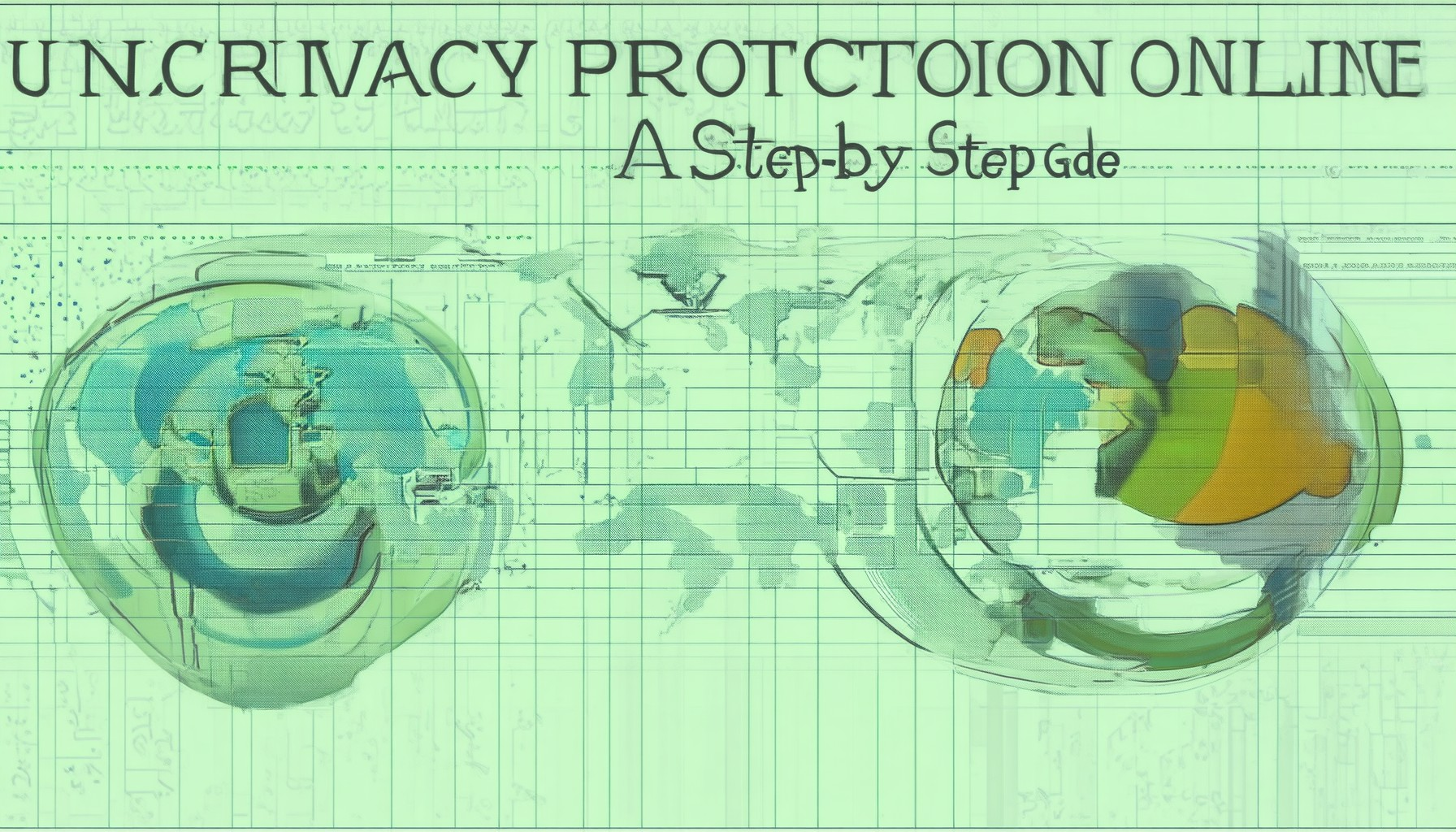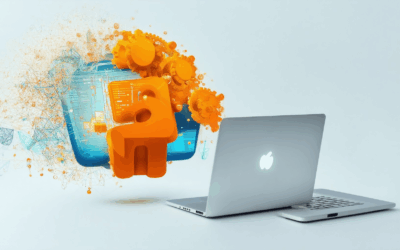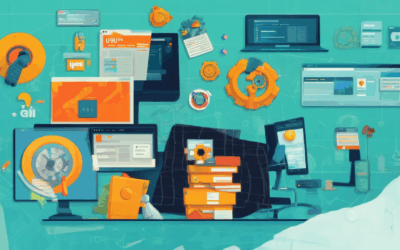In today’s digital age, protecting your privacy online has become more crucial than ever. With increasing cyber threats, data breaches, and invasive tracking, safeguarding your personal information has evolved into a necessity. Whether you’re concerned about identity theft, unwanted surveillance, or simply wish to maintain control over your digital footprint, understanding how to protect your privacy online is no longer optional but imperative. This guide offers a comprehensive step-by-step approach to help you secure your data, navigate the complexities of modern internet privacy, and empower yourself with the knowledge to stay safe in the online world. From understanding the threats to exploring practical strategies and tools, we’ll walk you through everything you need to know to protect your privacy online effectively.

Best Way to Protect Your Privacy Online
Protecting your privacy online requires a combination of awareness, tools, and habits. Here’s a step-by-step guide to safeguarding your digital identity:
- Use a VPN:** A Virtual Private Network encrypts your internet connection, masking your IP address and preventing third-party tracking. Consider options like BlindBrowser for reliable protection.
- Enable Encryption:** Use HTTPS websites and ensure your data is encrypted during transmission. Look for the padlock icon in your browser to verify secure connections.
- Secure Your Devices:** Regularly update software, enable strong passwords, and use biometric authentication to protect your accounts. BlindBrowser offers resources for managing device security effectively.
- Use Privacy-Focused Browsers:** Browsers like BlindBrowser.com prioritize privacy features such as ad blocking, tracker blocking, and secure browsing habits. These tools help reduce data collection by trackers.
- Manage Cookies and Tracking:** Regularly clear your browser history and disable tracking cookies. Tools like BlindBrowser provide detailed guides on managing online trackers.
- Stay Updated on Privacy Laws:** Familiarize yourself with regulations like GDPR and CCPA. These laws dictate how companies handle personal data, and staying informed helps you make better decisions.
Additional Tips:
- Minimize oversharing personal information online.
- Use unique, complex passwords for every account and consider a password manager for added security.
- Be cautious of phishing attempts and verify the authenticity of emails before clicking links.
By following these steps, you can enhance your online privacy and reduce the risk of data breaches. Remember, consistent effort goes a long way in protecting your digital presence. For more resources, visit BlindBrowser.com today.
How to Lock Your Personal Information Online
To safeguard your personal information online, follow these organized steps:
- Enable Encryption
- Use encryption software to scramble information sent over the internet. Look for a “lock” icon in your browser before transmitting personal or financial data to ensure secure connections.
- Utilize a Virtual Private Network (VPN)
- Protect your online identity by using a VPN. Choose reputable services like NordVPN or ProtonVPN to hide your IP address and enhance privacy.
- Manage Passwords Effectively
- Avoid password reuse. Use a password manager like LastPass to securely store and manage complex passwords for all your accounts.
- Implement Two-Factor Authentication (2FA)
- Add an extra layer of security with 2FA. Use authenticator apps like Google Authenticator or Authy to receive codes via SMS or an app for added protection beyond your password.
- Secure Public Wi-Fi Usage
- Refrain from using public Wi-Fi for sensitive activities. Always connect to encrypted networks and verify the lock icon to ensure security.
- Use Incognito Mode Wisely
- While incognito mode hides browsing history, it doesn’t encrypt data. Combine it with other security measures for optimal protection.
- Review Social Media Settings
- Adjust privacy settings on all platforms to limit who can view your posts and location data, reducing exposure to personal information.
- Install HTTPS Everywhere
- Use this extension to automatically switch to secure HTTPS connections, minimizing risks of accessing insecure sites.
- Explore End-to-End Encryption
- Enable end-to-end encryption in messaging apps like WhatsApp for secure communication, ensuring your messages are private.
By following these steps, you can effectively lock your personal information online, combining multiple layers of security to stay protected.

How to Protect Yourself Online for Free
Protecting yourself online doesn’t have to cost money. Here are some effective strategies to safeguard your digital presence:
- Enable Two-Factor Authentication:** Add an extra layer of security to your accounts by using two-step verification. Most major platforms offer this feature for free.
- Use Strong Passwords:** Create unique and complex passwords for every account. Consider using a password manager to keep track of them securely.
- Encrypt Your Devices:** Enable encryption on your smartphones, tablets, and computers to prevent unauthorized access to your data.
- Regularly Update Software:** Keep your operating systems, apps, and browsers updated to patch vulnerabilities that hackers might exploit.
- Avoid Suspicious Links:** Don’t click on links from unknown sources or unsolicited emails. Be cautious about downloading files from untrusted websites.
- Monitor Your Accounts:** Regularly check your bank, credit card, and email accounts for any unusual activity. Report suspicious behavior immediately.
- Use Privacy Tools:** Take advantage of free tools like BlindBrowser to browse anonymously and protect your online privacy.
- Stay Informed:** Keep up with the latest cybersecurity news and trends through free resources and newsletters to better understand threats and protection methods.
By following these simple yet effective steps, you can significantly enhance your online security without spending a dime. Prioritize your digital well-being to enjoy a safer browsing experience.

How to Protect Your Online Identity
Protecting your online identity is crucial in today’s digital age. Here are some essential steps to safeguard yourself:
- Use Strong Passwords:** Create complex passwords with a mix of letters, numbers, and symbols. Avoid reusing passwords across multiple platforms.
- Enable Two-Factor Authentication:** Add an extra layer of security to your accounts by using codes sent to your phone or through authenticator apps.
- Monitor Your Accounts Regularly:** Check for suspicious activity, unauthorized access, or changes to your account details.
- Encrypt Your Devices:** Use encryption for your hard drives, USBs, and cloud storage to prevent unauthorized access to your data.
- Manage Social Media Settings:** Limit the information you share online and adjust privacy settings to control who can see your posts and profile details.
- Regularly Check for Data Breaches:** Use tools to monitor your email and online accounts for signs of compromised credentials or breaches.
By following these steps, you can significantly reduce the risk of identity theft and unauthorized access to your personal information. Stay vigilant and adapt to new threats as they emerge to keep your online identity safe.
How to Avoid Getting Your Identity Stolen?
Protecting your identity is crucial in today’s digital age. Here are some essential steps to safeguard yourself:
1. Safeguard Personal Information
- Never share your Social Security number, birthdate, or financial information unless you’re certain it’s a secure website.
- Be cautious about what you reveal on social media platforms. Avoid posting personal details like your address or phone number.
- Shred documents containing sensitive information before discarding them.
2. Use Strong Passwords and Two-Factor Authentication
- Create complex passwords with a mix of letters, numbers, and symbols for every account.
- Enable two-factor authentication (2FA) wherever possible to add an extra layer of security.
- Use a password manager to keep track of your credentials securely.
3. Monitor Your Accounts Regularly
- Check your credit report annually for accuracy. Signs of fraud include unfamiliar credit inquiries or debt you don’t recognize.
- Review your bank, credit card, and investment accounts regularly for any unauthorized transactions.
- Set up alerts for changes in your account settings or balances.
4. Be Cautious on Public Wi-Fi
- Avoid conducting sensitive transactions like banking or shopping online while connected to public Wi-Fi.
- Use a VPN (Virtual Private Network) when accessing personal or work-related accounts through public networks.
5. Check for Suspicious Activity
- Regularly log in to your accounts to check for any unexpected changes or unauthorized access.
- Look out for unusual transactions on your credit cards or bank statements.
- Report any suspicious activity to your financial institutions immediately.
6. Teach Your Children About Online Safety
- Instill the importance of not sharing personal information online.
- Guide them on using strong passwords and enabling privacy settings on their devices.
- Discuss the risks of phishing and scams in a way they can understand.
7. Avoid Phishing Attempts
- Be cautious of unsolicited emails, texts, or calls asking for personal information.
- Hover over links to see if they lead to legitimate websites before clicking.
- Verify the authenticity of any communications from businesses before sharing information.
8. Use Encrypted Communication Methods
- Use apps like Signal or WhatsApp for secure messaging when discussing sensitive information.
- Avoid using public chat groups for personal or financial discussions.
9. Keep Software Updated
- Regularly update your operating systems, browsers, and apps to patch security vulnerabilities.
- Enable automatic updates whenever possible to stay protected against known threats.
By following these steps, you can significantly reduce the risk of identity theft and protect yourself from becoming a victim. Stay vigilant and informed to enjoy peace of mind in the digital world.

Keeping Your Personal Information Safe Online
Protecting your personal information online requires a combination of awareness, proactive measures, and good habits. Here’s a guide to safeguarding your data:
- Password Management: Use a reliable password manager like LastPass or Dashlane . Create unique, complex passwords for every account to minimize the risk of unauthorized access.
- Encryption: Look for websites marked with HTTPS to ensure data encryption during transmission. Consider using a Virtual Private Network (VPN) like NordVPN to hide your IP address and enhance privacy.
- Two-Factor Authentication: Enable 2FA on your critical accounts, such as your bank and email. This adds an extra layer of security beyond just your password.
- Public Wi-Fi Caution: Avoid conducting sensitive transactions on public Wi-Fi. If necessary, use a VPN to encrypt your connection and protect your data.
- Spotting Phishing Attempts: Be vigilant with unsolicited emails or messages. Verify the sender’s identity before responding or clicking on links. Educate yourself on common phishing tactics to avoid falling victim.
- Data Breach Monitoring: Regularly check if your personal information has been exposed through data breaches using tools like Have I Been Pwned .
- Social Media Privacy: Adjust your privacy settings on social platforms to restrict access to your personal information. Avoid oversharing details that could be misused.
- Encrypted Messaging: Use encrypted messaging apps such as Signal or WhatsApp to securely communicate sensitive information.
- Software Updates: Keep your operating systems, browsers, and apps updated to benefit from the latest security patches and protections.
- Educating Others: Teach family members and friends about online safety to prevent accidental exposure of personal information.
By implementing these strategies, you can significantly reduce the risk of identity theft and data misuse, ensuring your personal information remains secure online.




